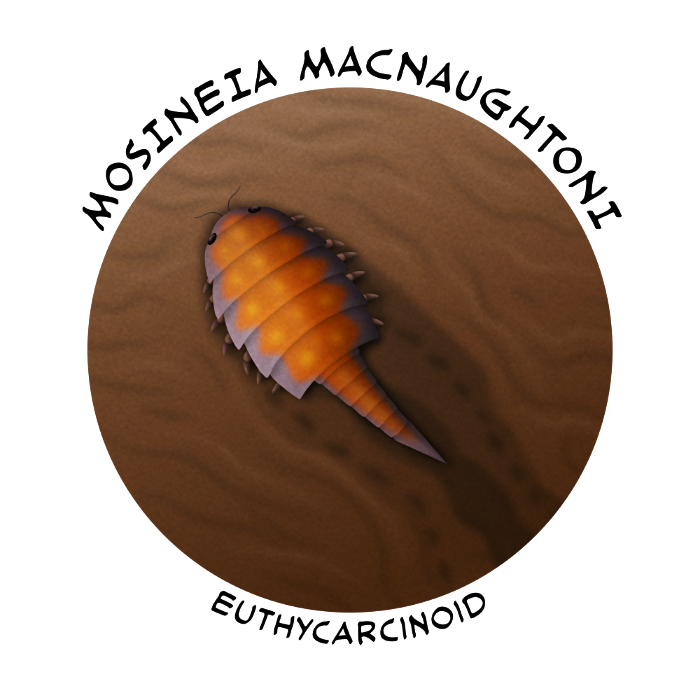The euthycarcinoids were a group of euarthropods known from the mid-Cambrian to the mid-Triassic (~500-254 million years ago), surviving through multiple mass extinctions including the devastating “Great Dying” at the end of the Permian that finished off the trilobites. But despite an evolutionary history spanning around 250 million years they have a very sparse fossil record, extremely rare and known from less than 20 species across their entire time range.
For a long time their affinities were uncertain, and they’ve been variously suggested to have been crustaceans, trilobites, or chelicerates, or even to have been a lineage of earlier stem-euarthropods. But since the early 2010s better understanding of their anatomy has placed them in the mandibulates, probably as the closest relatives of the myriapods and helping to close the gap between the aquatic ancestors of that group and their earliest known terrestrial forms.
Most known euthycarcinoid species lived in brackish and freshwater environments, but some Cambrian species have been found in tidal flats associated with the terrestrial trace fossils Protichnites and Diplichnites – indicating that they were amphibious and some of the very first animals able to walk on land.

Mosineia macnaughtoni is a Cambrian euthycarcinoid known from the Blackberry Hill fossil deposits in Wisconsin, USA (~500-489 million years ago).
At around 10cm long (4″) it was fairly large for a Cambrian euarthropod, and like other euthycarcinoids it had a three-part body plan with a head bearing antennae, eyes, and mandibles, a thorax with pairs of uniramous legs, and a limbless abdomen that ended in a tail spine.
It probably ventured out of the water to feed on the rich microbial mats that covered the mudflats, taking advantage of an environment free from predators and competition. It may also have laid and fertilized its eggs on the shore, similarly to modern horseshoe crabs.
